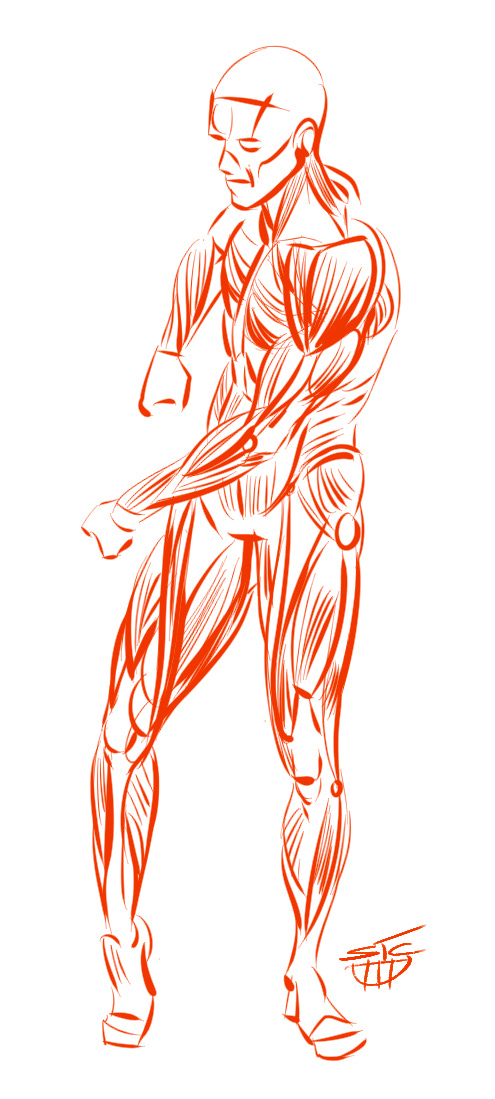For years I’ve been collecting and referring to many books to develop my understanding of anatomy. In my early twenties, although I wasn’t in a formal art program, I made it a point to thoroughly familiarize myself with the human form to draw more accurately. I was rather obsessive about it, committing to memory the names of muscles and bones believing It would benefit me in the long run. Overall, I believe it did. It took a long time for me to draw the human form with confidence without reference (trust me, reference is still preferred). I credit these books and sources for aiding me in this effort.
How To Draw Comics The Marvel Way
This was the first book as a kid that I got my hands on. Written by Stan Lee and illustrated by John Buscema, it was my gateway into understanding how to draw the human form, albeit, as an idealized super being. Regardless, it formed the groundwork.
This book, by Dr. Paul Richer was a required textbook when I took an elective figure drawing class in college. It’s pretty intense as far as covering all the muscles and bone structure of the human body. In some ways, intimidatingly dense. I did study extensively from it—but mainly the surface muscles.
An Atlas of Anatomy For Artists
Written by Fritz Schider, I found it to be more simplified and digestible than Artistic Anatomy. It was my go-to for years. It features photographs alongside sketches. I loved how it incorporated muscle movement, and color (orange) to delineate muscle groups.
I picked this one up from the bargain section at Barnes & Noble. It’s by Jeno Barcsay who taught anatomy at the Budapest Academy of Fine Arts. The anatomy sketches are absolutely beautiful. I added it to my collection solely for its aesthetic.
An Approach to Drawing & Construction by Walt Reed. This book is less focused on pure anatomy and more on figure construction. The biggest stand out for me with it is the section on hands. Overall, a good source to have, but there are others I feel are more so essential.
Figure Drawing For All It’s Worth
This Andrew Loomis book is a must-have. There was a time when this book, along with his others, was out of print. I found images of it online, and put together my own notebook. Thankfully, his series of books are now available for purchase. His approach is classic and holds up still.
I discovered this gem by Jack Hamm from another illustrator in a class I was taking. I thumbed through it and immediately knew I had to get it. It’s loaded with great insights, tips, and landmarks for constructing a figure. It’s small, but it packs a punch. It’s one of my favorites.
This is part of a series of books by Burne Hogarth (I also have his book Dynamic Wrinkles and Drapery). The reason I picked up this book was for Hogarth’s exaggerated illustrative approach to explaining anatomy. His shapes are bold, and pronounced, bordering on caricature. I appreciated its lack of subtly to demonstrate the beauty of human anatomy.
Figure Drawing: Design and Invention
If there is only one anatomy book you were to get, I think it’s this one by Michael Hampton. It combines elements of Hogarth’s approach with lovely sketchwork. Hampton doesn’t go into the weeds with anatomy, simplifying it as bite-sized morsels.
Although not a book, my last nod goes out to the Proko anatomy tutorials. These are by far one of the best resources for learning anatomy. If you are dedicated to honing your skills at drawing the human figure you must check them out. These videos cover so much more than just anatomy. You can subscribe on Youtube for free, or even go deeper with their paid offerings.
Time for me to draw!
Thanks for subscribing!





